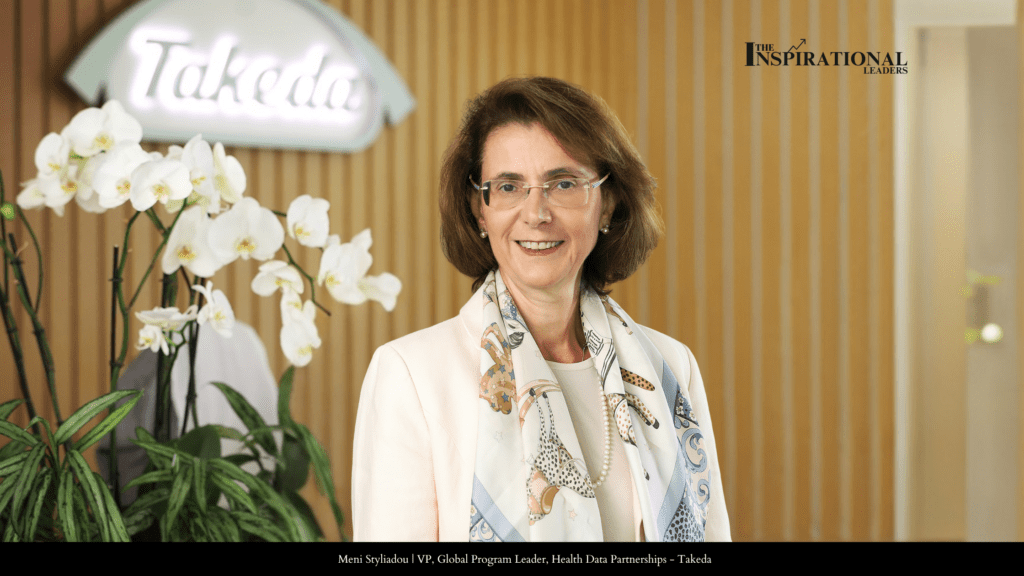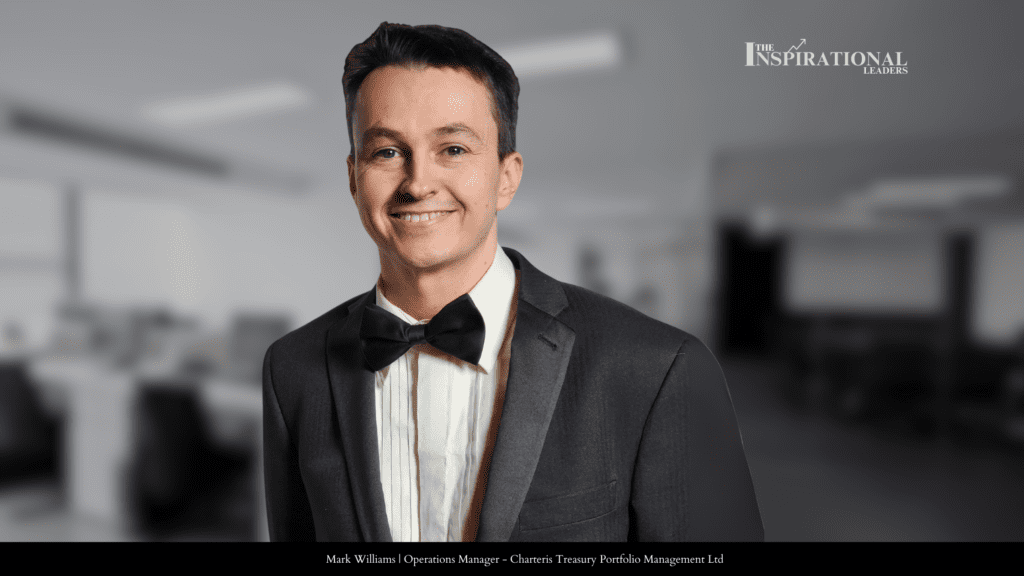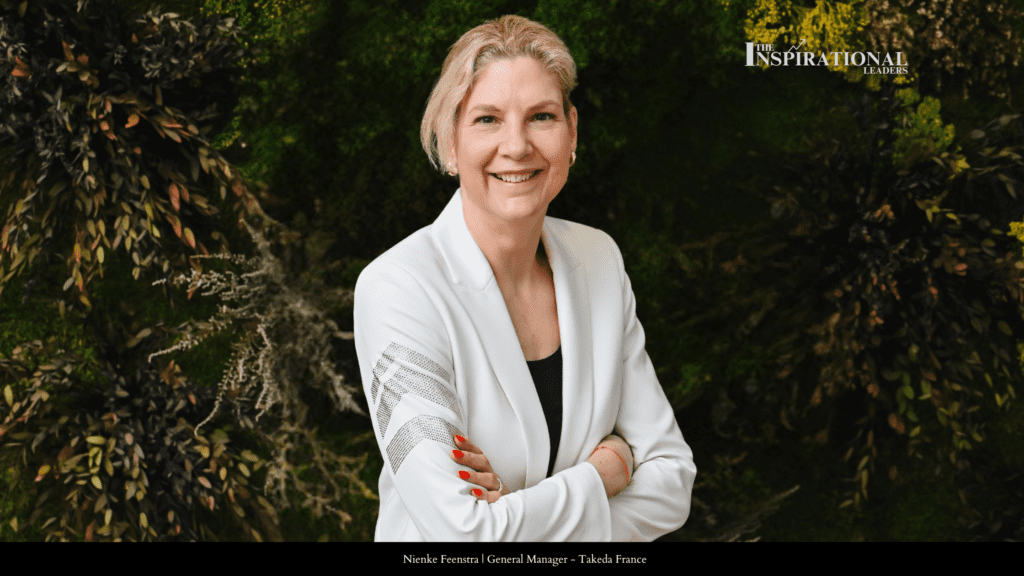Meni Styliadou: Harnessing Health Data to Redefine the Future of Pharma and Biotech
Digital Version In an era where artificial intelligence, real-world data, and digital health tools are rewriting the rules of medicine, few leaders stand as clearly at the intersection of technology, healthcare, and societal impact as Meni Styliadou, Vice President and Global Program Leader for Health Data Partnerships at Takeda. Her career journey reflects an enduring theme: creating impact that transcends industries and touches lives. From her early work enabling broadband infrastructure across Europe to her present mission of building trusted frameworks for health data collaboration, Meni’s path is defined by curiosity, conviction, and the belief that innovation in healthcare must begin and end with people. As part of our special feature “Top Pharma & Biotech Leaders to Watch in 2025,” we had the opportunity to explore her vision, her leadership philosophy, and the initiatives she is driving that may well shape the future of life sciences. From Technology to Healthcare: A Journey Driven by Societal Impact When asked what first drew her into the world of healthcare and data, Meni recalls that the seeds were planted much earlier in her career. “There’s a common theme throughout my career: creating societal impact,” she reflects. In the first half of her professional life, she worked in technology, focused on enabling broadband to scale across Europe. The mission was ambitious—removing policy barriers and building the infrastructure that would connect people at scale. While the results were transformative for many sectors, Meni noticed something that unsettled her. “The sector that could benefit most from this leap forward—healthcare—was not making use of it. That question stayed with me: why isn’t health fully benefiting from technology?” When the opportunity arose to transition into healthcare, Meni embraced it. That curiosity evolved into a guiding motivation. Today, she sees the same fundamental challenge: digital tools, whether AI or others, are only as effective as the data they are trained on. And the healthcare sector still struggles with how it generates, governs, and applies data. Her current role at Takeda is dedicated to addressing that gap head-on. Building Health Data Partnerships at Takeda Takeda’s deep-rooted focus on innovation and putting patients first resonates strongly with Meni’s personal vision. Her mission is built on a clear but transformative principle: large-scale healthcare innovation is only possible when supported by trusted data collaborations. “At Takeda, we believe that true innovation in health requires the ability to analyse data at scale,” she explains. “That is only possible when stakeholders are willing to share data in trusted frameworks, with the right governance and access models in place.” Her mandate is to build those partnerships—creating the governance, trust, and collaboration required to unlock the full potential of health data. This is not merely conceptual. Meni points to one initiative that embodies this work: the Health Outcomes Observatory (H2O). Launched initially as an Innovative Health Initiative-funded public-private partnership, H2O has since matured into a pan-European independent body. Its mission is clear: empower patients to systematically capture and share their health outcomes in standardized, transparent ways. By doing so, it enhances the dialogue between patients and their clinicians while also enabling regulators, researchers, and industry to use this data responsibly for advancing care. “Efforts like this are fully aligned with Takeda’s vision,” she says. “To put patients at the center, advance science responsibly, and drive innovation that is meaningful in the real world.” Unlocking the Power of Real-World Data Traditional clinical trials have long been the gold standard for evaluating treatments. Yet Meni emphasizes that they operate under controlled conditions that rarely reflect the complexity of real life. “If we want to achieve actual breakthroughs in healthcare, the type of data that we can capture in the real world is much richer than what we capture in clinical trials,” she explains. “In everyday life, patients have multiple conditions, take other medicines, and live in varied environments. Real-world data fills that gap. It helps us understand how treatments truly work in practice, identify trends, and even uncover unexpected links between conditions.” However, a challenge remains. Regulators and health technology assessment bodies have often been cautious about real-world evidence—not because methodologies lack rigor, but because reliable data has not been available at scale. That is precisely what Meni’s team is working to change. “We are building the structures, governance, and incentives needed for stakeholders to generate standardized, high-quality patient outcomes data. Only then can real-world evidence give voice to patients and drive our decision-making.” Navigating the Challenges of Data Partnerships While the benefits of health data partnerships are evident, forging them is not without obstacles. Meni is candid about the complexity. “True collaboration only succeeds when it creates shared gains for all stakeholders. You can’t convince stakeholders to collaborate unless it’s clear that by coming together, we will create something bigger than any one of us could achieve alone.” She highlights that effective partnerships rely on robust governance, clear transparency, and inclusive decision-making with all parties involved. She acknowledges that managing partnerships is often more complex than leading a single organization. Yet she likens the approach to Switzerland’s enduring consensus-based system: complex but remarkably durable. “She highlights that it remains the most effective route to drive enduring change and real value. Embedding Ethics and Governance from the Start Ensuring ethical, private, and well-governed use of data is now a top priority in the digital age. For Meni, these are not add-ons but the foundation of any project. “From the very beginning of my career, I’ve put societal expectations, ethics, and governance at the core of my thinking. I don’t think of governance as something to ‘fix’ afterwards, but as the foundation on which a project is built.” This philosophy extends beyond compliance with existing standards. Takeda and its partners actively engage in shaping emerging frameworks to ensure data can be shared responsibly, with patient privacy and control protected. “By embedding these principles upfront, we can be pioneers in shaping how global standards evolve,” she says. Fostering Trust Across Diverse Ecosystems Takeda’s partnerships bring together regulators, academic institutions, technology innovators, and




